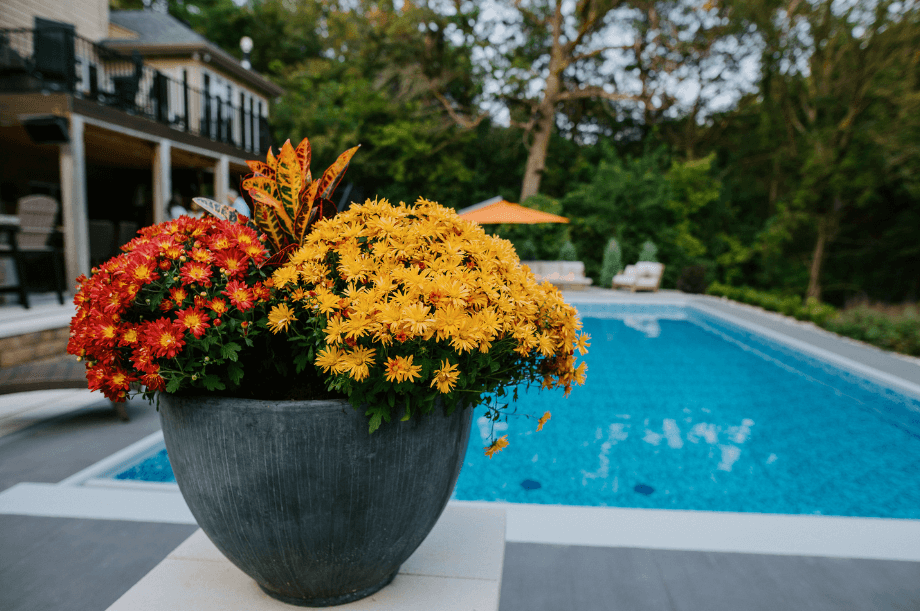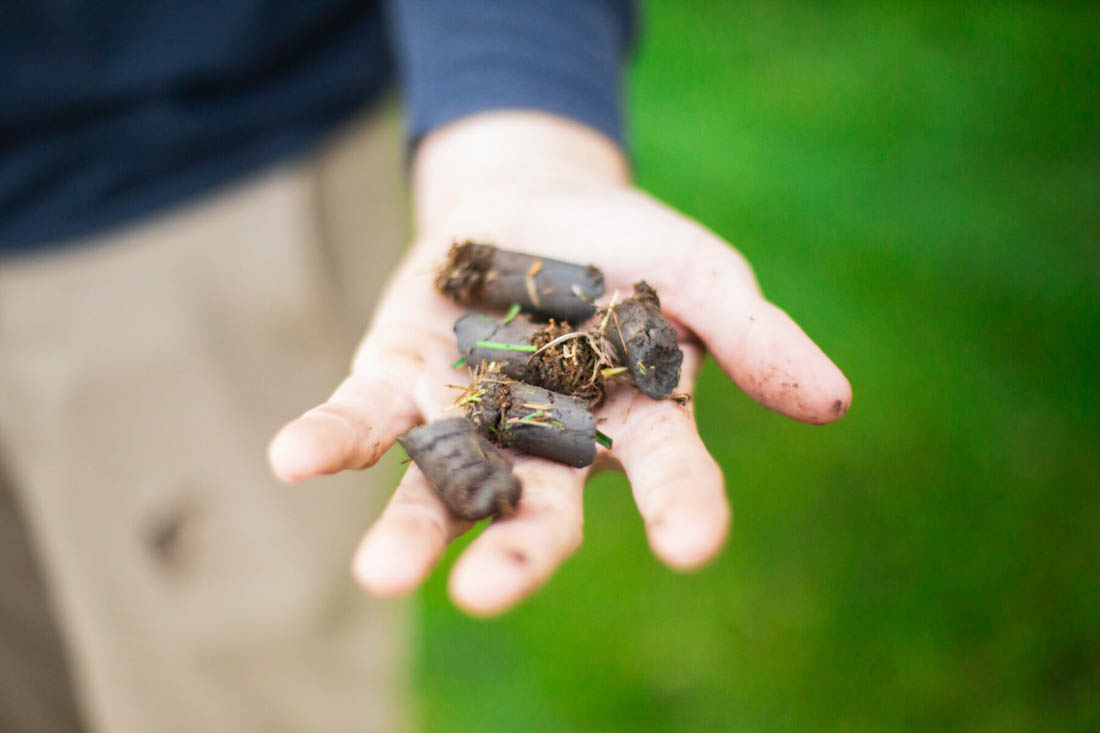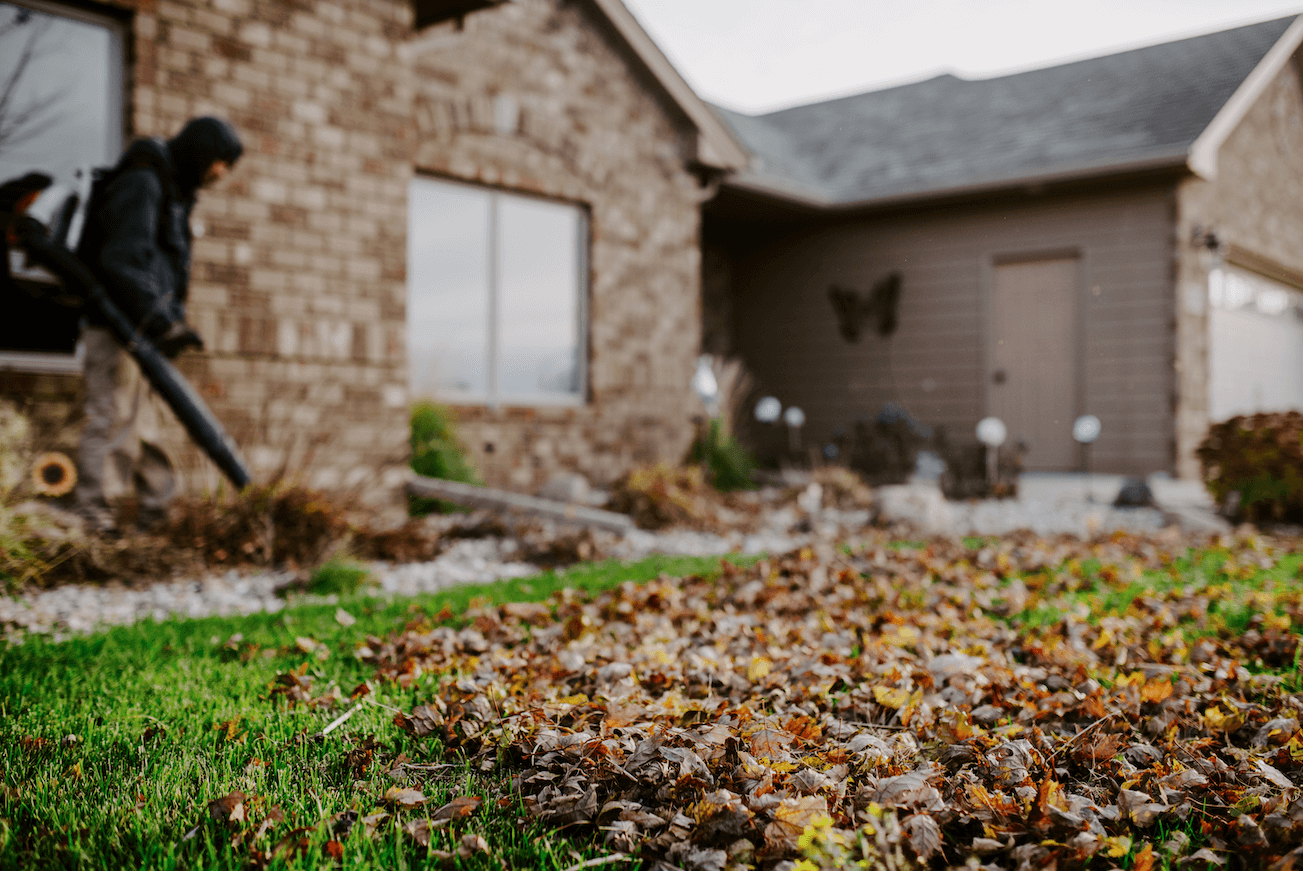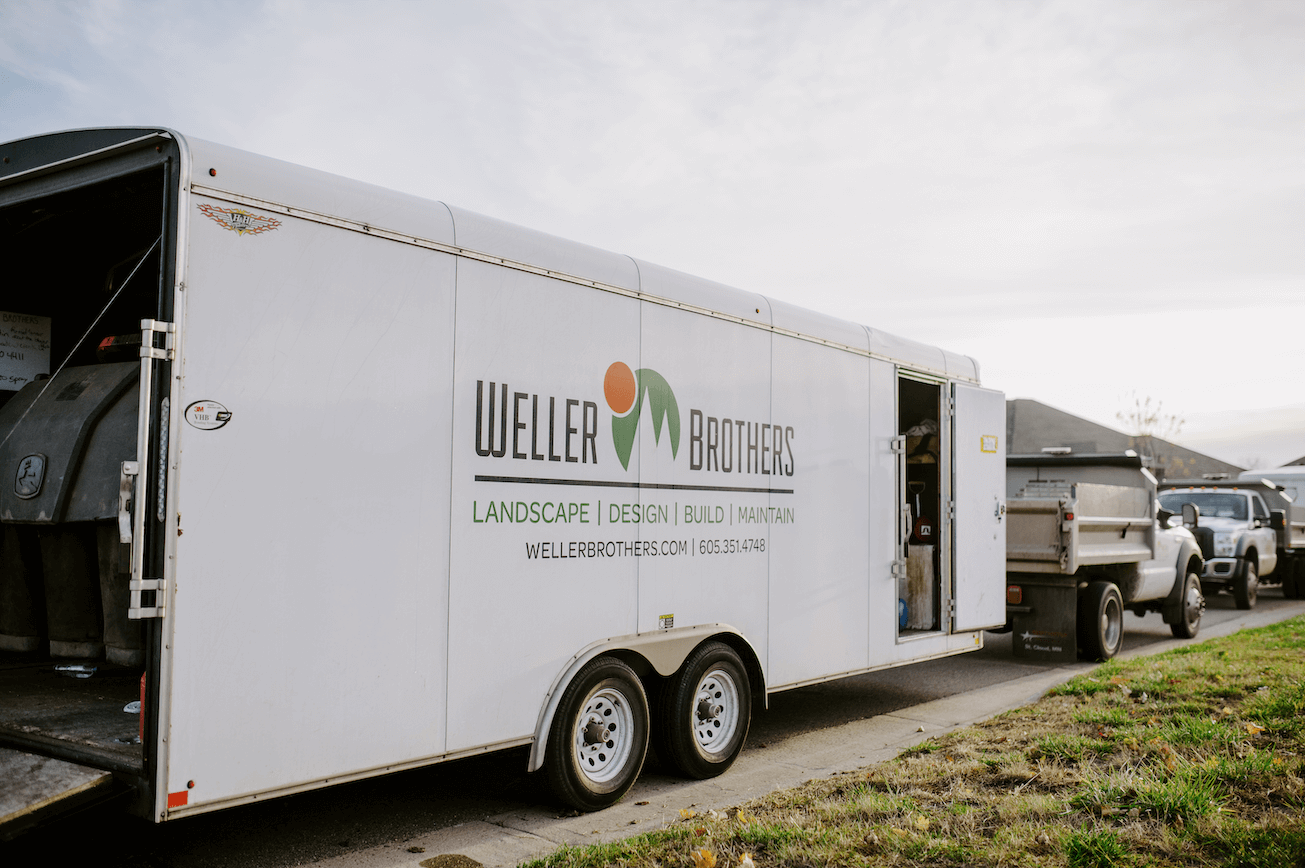Five Steps to Prep Your Yard for Winter
The Midwest winter cold can be a huge shock to your yard, garden, and landscaping. It’s important to prep your yard before the cold sets in so that your turf, plants, and flowers are ready to bloom again in the spring.
Here are five things you can do as part of your landscaping fall clean-up routine.
1. Clean Your Pots and Containers

This is a good time to gather all of your seasonal flower pots and clean them so they are ready for next spring.
Remove all plant material from the pot. If the soil has become root-bound, remove this as well. Removing the plant debris reduces the possibility of diseases being carried over to next season’s plants.
Clean your pots and bring them inside for the winter to reduce the risk of damage.
2. Cut Back Your Flower and Garden Beds
Cutting back your annuals, perennials, and shrubs will keep your beds looking tidy throughout the winter, while also setting them up for a successful bloom next year.
Annuals and Vegetables
As part of your fall cleanup, remove all of your annuals from pots and garden beds and till the soil, if applicable. If you have organic material like leaves and grass clippings, add these to the soil to help build nutrients.
Note that it’s important to completely remove your vegetable debris (vine crops, tomato vines, etc.) from the garden as they can harbor disease and insects.
Perennials and Shrubs
Each type of perennial is different, but most should be cut back ahead of the winter frost.
- Ornamental grass: Leave this 3”-4” tall if you choose to cut it back. Some people like to leave them for winter interest during the winter season; they provide a nice look with fresh snowfall.
- Herbaceous perennials: Cut back about 1” above the ground.
- Hydrangeas: Pruning techniques depend on the type of hydrangea. Some types can be cut back to the ground, leaving about 4-6.” Other types need light to moderate pruning, to keep them in shape. There is no harm in choosing to leave these for spring pruning, as they provide winter interest.
- Dogwoods: This is a very hardy shrub and can be pruned back 50%, removing any dead material.
- Spireas: Cut them back to about the size of a beach ball.
- Roses: Don’t do anything until spring. If needed, minimal pruning/shaping can be done in the fall if the rose(s) have become too large or are unsightly. Then, use a hand pruner to remove any dead canes so the roses have a neat, healthy appearance.
3. Seed and Aeration Your Lawn

If you want your lawn to be fuller and healthier in the spring, you should seed and aerate it in the fall.
Overseeding
You can purchase or rent an overseeder machine from a local hardware store. This machine has rotating blades that leave a groove in the ground, into which it deposits the grass seed. Confirm that the grass seed you purchase is right for the light conditions of the area (sunny vs. shady). You can then use this machine to plant the new seed in any thin spots of your lawn.
The benefits of overseeding include:
- Fills in bare or thin areas damaged by diseases, heat, water deficit, insects, pets, and foot and equipment traffic. It also increases the density of existing turf.
- Reduce Risk of Pests & Disease: Overseeding will introduce new cultivars of grass seed that are more tolerant to pests and diseases.
- Reduces weeds: Creating a lush, dense turf, is the best defense against weeds.
- Improves Appearance: Seed germination occurs in 7-10 days.
- Reduce Erosion: Grasses have fibrous, dense root systems that do an exceptional job of holding soil in place.
- Increases Thickness/Density: Turf becomes more durable, withstanding foot traffic and play, as well as holding up to natural weathering and environmental stress.
- Reduces Chemicals: Maintaining a healthy, robust turf can reduce the chemical applications needed.
Before beginning the work, check the yard for any objects that can be thrown by the blades/machine. Rocks are a common hazard.
As an alternative to renting an overseeder, you can hire a professional like Weller Brothers Landscaping to take care of this. We have all of the equipment needed and use professional, high-quality seed mixes/blends.
After planting the grass seed, do nothing. You don’t want the seed to germinate until the spring because cold winter conditions could injure or possibly kill the young tender shoots The winter snow will help with insulation and soil moisture once spring does arrive, reducing the need to water the area as frequently.
You can put down an erosion control blanket to help protect the area until the seed germinates in the spring. This will naturally biodegrade into the ground over time.
Lastly, when mowing your new turf for the first couple of mowings, be sure to bag or rake the clippings. Removing the clippings prevents the clipping from collecting on the turf canopy and killing or injuring the young turf.
Aeration and Fertilizer
Have you ever noticed clumps of dirt on a beautifully green lawn? That’s the process of aeration.
There are many benefits to aerating your lawn before the winter:
- Improved air exchange between soil and atmosphere
- Enhanced soil water uptake
- Improved fertilizer uptake and use
- Reduced water runoff and puddling
- Stronger and healthier turfgrass roots
- Reduced soil compaction
- Enhanced heat and drought stress tolerance
- Improved resiliency and cushioning
- Enhanced thatch breakdown
To aerate your lawn, you can rent a machine or hire a professional.
In addition to aerations, a fall fertilizer application is very beneficial. If you chose to do both, apply the fertilizer first and then aerate your lawn. When applying a fall fertilizer, be sure to select a product that is low in nitrogen. Typical fertilizer bags will specifically say “fall” or “step four” on them.
4. Remove the Leaves

This is one of the most important things to do in order to keep your lawn healthy come spring. Removing the leaves prevents disease and insects from damaging your turf in early spring.
After the kids have enjoyed jumping in the leaf piles all autumn, you need to remove the fall leaves from your yard to avoid having dead spots in the grass next spring.
It’s way easier to do this in the fall than to deal with gross, matted leaves in the spring — trust us!
You can also mulch your leaves. This will require several passes with the mower in order to mulch all the leaves into tiny pieces.
5. Winterize Your Irrigation System
The last thing you should do as part of your lawn’s fall clean-up routine is to have your irrigation system winterized.
For this, hire a professional to blow out the irrigation system with an air compressor. This process removes any of the remaining water in your irrigation system so that it doesn’t freeze in the winter. If you skip this important step, it is possible that any remaining water in the irrigation system may cause damage to the irrigation system components, potentially causing a pipe to burst and creating water damage in your house,
Yikes.
Bonus tip: Don’t forget to remove the garden hose from your water spigot before the winter freeze!
Sound Like A Lot? Call the Professionals

At Weller Brothers, our team of landscape professionals does this kind of work day-in and day-out, all year long in the Midwest.
We know how to prepare your yard for each season ahead so that you can have the healthiest, most beautiful lawn on the block.
Want us to take care of prepping your yard for winter? Contact us today.
